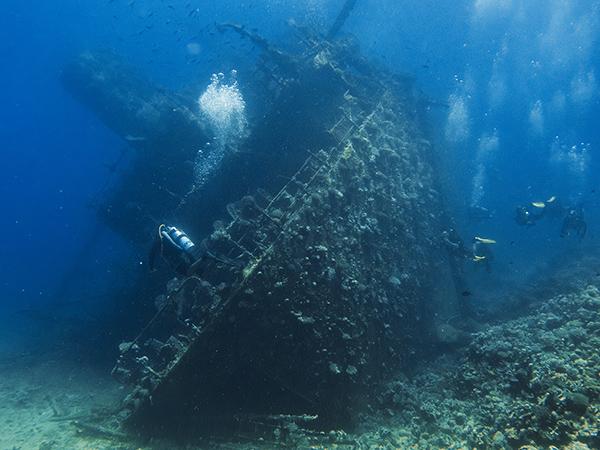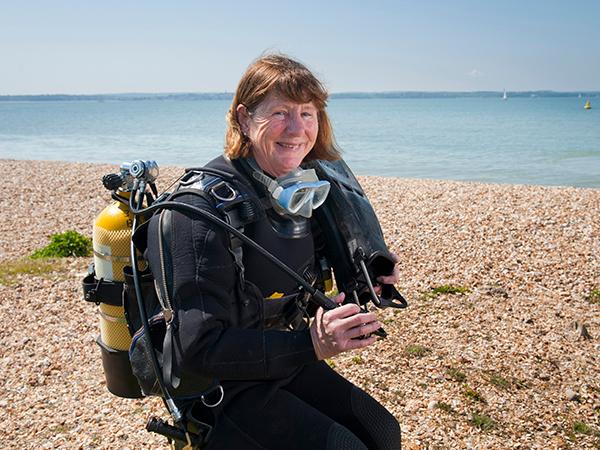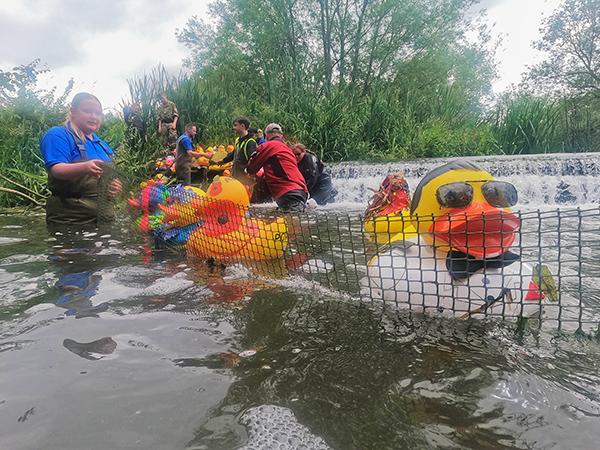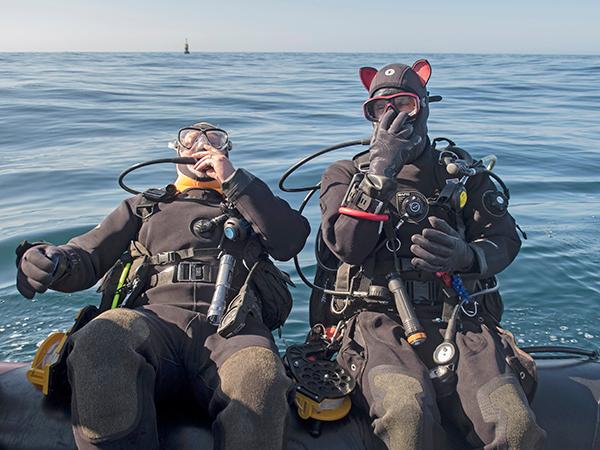I’m pleased to be able to announce the upcoming launch of some new initiatives including the new BSAC eLearning facility and updated Sports Diver course, plus share some other updates, including important amendments to rescue procedures and lowering the age of commencing diver training to 10 years for the Discovery Diver course.
I appreciate there will be a lot to take in here but we thought it may be easiest for you to absorb it all together. You can read this and follow the links to the full information online. Or, should it be easier, the complete update is available on this downloadable PDF.
Thank you to all of the volunteers that have made these updates possible. Also, to all of you, our highly-valued instructors out in the network making great things happen for everyone in our community.
Dai Atkins
BSAC National Diving Officer
1. New eLearning platform for Discovery Diver and Ocean Diver
BSAC is launching a new eLearning platform where members can complete Discovery Diver (subset of Ocean Diver) and Ocean Diver theory modules online and in their own time. The new system, which can be accessed via the online learning hub, has been created to help clubs and members by making training more flexible in terms of when, where and how members can complete diving theory.
With a mixture of online content - videos, page-turners and quizzes – the new BSAC eLearning system will deliver the theory modules from Discovery Diver and Ocean Diver in a simple format.
BSAC still highly values face-to-face theory classroom sessions and training webinars but feels the eLearning system will be a great tool to aid our already stretched instructors in delivering courses. BSAC eLearning will launch in mid-August 2020.
Members who already have training packs for the course and their Unique Reference Number (URN) will be able to access eLearning for free for a period of two months from the launch date.
There will be various training pack options for clubs and centres, including eLearning only, printed & eLearning and printed-only materials for those not wanting to use the new system. Further info including prices to clubs and centre.
Key points:
- Clubs will be able to offer more learning options and support to new trainees
- Members will be able to ‘catch up’ if they miss club lectures and/or revisit tricky topics.
- Relieves pressure on instructor resource
- No need for students to have hard copy packs with new eLearning system.
More info on BSAC eLearningMore info on the Discovery course
2. Sports Diver has been updated
BSAC’s second most popular course has now followed Ocean Diver in terms of getting a thorough review, update and new look. The new visual aids (VAs) and instructor manual are now available to download in the instructors’ section online.
The pre-June 2020 Sports Diver online materials will still be available for the foreseeable future to support the continuation of any part-completed Sports Diver courses. The pre-June 2020 physical training packs will still be valid. Please continue to use any pre-2020 packs you have and QRB pages until you run out. However, please instruct using the new 2020 syllabus and instructor materials.
Main updates to the course:
- The use of an automated external defibrillator (AED) in the priority of rescue sequence has been incorporated into Sports Diver training (in terms of awareness of its use).
- Diver lifts out of the water have changed. There is no longer a one-person lift as we want to impress upon the importance of having shore cover or a Dive Manager for each and every dive.
- The two-person lift is altered so that the rescuers have a better and safer grip of the casualty.
- There is a new stand-alone practical rescue lesson called SP1. This encompasses all aspects of diver rescue (it is stand-alone in advance of a potential to extract modular elements of the course to complement other types of safety training and BLS refreshers).
- Dive management is encompassed in SP2 and goes into much greater depth. There is an option to follow teaching methods such as MAPP and there is also some flexibility in how much the student needs to learn.
- Two methods of teaching 180-degree bearings for compass skills rather than one.
Download the new Sports Diver instructor materials
3. Reduction in age from 12 to 10 years
The age at which divers may commence the Diver Training Programme has been approved to be lowered to 10 years of age. For those who already deliver training to members as young as 12 years of age, this change should have no major impact on your delivery, however, all branches and centres are requested to review their Safeguarding procedures, Branch constitution, risk assessments and insurance cover for participation of divers of this age.
The reduced age is only applicable to the delivery of diver training and qualification up to Discovery Diver and is limited to 12m. Branches themselves can impose their own minimum age limit if they wish.
Updated Discovery Diver student materials (suitable for 10-year-olds) will be available on BSAC eLearning only. Printed training packs for the Discovery Diver course will not be available to buy. However, clubs/members could buy the existing Ocean Diver pack and just complete the Discovery Diver elements if aged under 12.
Useful links:
- Child safeguarding policy
- Guidance on under 18s
- Template byelaws for clubs
- Discovery Diver course information
Download the Discovery Diver instructor materials
4. Amendments to rescue procedures
It is important to keep up-to-date with current practice and amend BSAC’s procedures accordingly. There are three changes to BSAC’s Diver Training Programme (DTP) lessons and delivery as detailed below.
The changes include/cover:
- Integration of the use of Automated External Defibrillator (AED) in all Basic Life Support (BLS) lessons
- Calling for assistance
- Landing and lifting a diving casualty
Full details on the changes as follows.
4.1 Integration of the use of AED in all Basic Life Support (BLS) lessons
The use of the AED is a proven factor in the survivability of casualties in need of BLS. Whilst in some locations the practicalities of the dive site may mean its use is less effective if effective at all (wet moving RHIB), the use of the AED should be a primary tool in the administration of the casualty care. Many dive charter vessels are carrying AEDs and their public availability at shore dive locations is increasing. The AED should be called for as soon as possible after the casualty has been assessed as not breathing normally. If one is available, it should be used to supplement and support the BLS being delivered.
AED in training delivery
The instructor resources (Visual Aids and the manual) have been amended to reflect this change. Lessons ST2, SP1, DT2, DO5, DO7, AT4, AO2 are all affected by this change, as is the Skill Development Course (SDC) O2 Admin. PRM, Lifesaver and Advanced Lifesaver and Snorkeller training may also be affected in their delivery, dependent on what scenarios instructors choose to use. Instructors should access the updated resources via the Instructor section on the BSAC website and deliver all future training utilising the current information.
Training AEDs are widely available via open sources at a cost of as little as £45. Clubs should purchase training AEDs and implement this training as soon as practical. BSAC has sourced quality training AEDs that meet the requirements and can be purchased by clubs or individual approved AED instructors at a cost of £35 per unit from the BSAC Shop. These units are ideal for use in dryland settings i.e. classroom scenarios as they have a limited ingress protection (IP) rating. In addition, BSAC Regional teams and HQ do have a limited quantity of units that can be loaned on a short-term basis. For wet locations simulation of the AED could be conducted along with discussion or if available a higher IP rated training AED could be used.
AED SDC
The AED SDC still provides additional information and training that is not covered in the diver grade training sessions and as such will remain as an additional module SDC. BSAC recommends that our members undertake the training at some stage to develop a pool of trained users within their club. It is also recommended that refresher training of users and instructors is conducted at regular intervals this could be linked in with refreshers in oxygen administration and general first and PRM.
AED Awareness – Online course
To assist instructors who are not AED trained or those who require a refresher on the basic use of the AED there is now a free online e-learning awareness course accessible online.
The course is a free standalone awareness package that anyone can access. On successful completion of the course, a certificate of completion can be saved and if a current member of BSAC, your success is recorded in your MyBSAC profile.
All Theory instructors and above are encouraged to complete the course to ensure that they have the current knowledge to deliver the addition of the AED in the 2020 DTP. For those instructors who do not hold an AED qualification we encourage you to attend a full AED SDC or equivalent and record the information with BSAC HQ.
4.2 Calling for assistance
Previous versions of the Diver Training Programme (DTP) stated for in-water rescues the “Help Shout” was to be done after administering 10 rescue breaths. This is not in keeping with current practice.
The need to instigate the next level of care is crucial to the survivability of a casualty. An initial “Help Shout” should be made as soon as it is established that assistance is required.
This could be a land-based situation or a diving incident. For a diving incident immediately on surfacing, once positive buoyancy has been achieved for both casualty and rescuer a “Help Shout” should be given and then the appropriate rescue techniques commenced.
Calling for assistance in training delivery
The instructor resources (VAs and the manual) have been amended to reflect this change. Lessons ST2, SP1, DT2, DO5, DO7, AT4, AO2 are all affected by this change, as are the SDCs O2 Admin, PRM, Lifesaver and Advanced Lifesaver and Snorkeller training. Instructors should access the updated resources via bsac.com/instructors on the BSAC website and deliver all future training utilising the current information.
4.3 Landing and lifting a diving casualty
A variety of adaptations of the description of the landing technique described in previous versions of the DTP have had varying results. Some have been positive, some not so, resulting in pain and discomfort to both simulated casualty and rescuers.
Landing and lifting a diving casualty in training delivery
The technique that has been endorsed by BSAC for the recovery to the shore of a diver casualty is now incorporated into the DTP starting at lesson ST2. This technique should be utilised throughout diver training and activities where the recovery of an unresponsive/incapacitated diver is needed.
The following sequence explains the method.
Diver extraction method
- Once the divers kit has been removed the protection of the neck and airway must be maintained. Ideally, one rescuer takes responsibility for this role and so becomes the person in charge of the move.
- Rescuer 2 moves into position opposite Rescuer 1 and both rescuers, facing inwards, put their shoulders under the casualty’s arm into the armpit area and reach across the front of the casualty’s waist area gripping where possible.
- The arm not gripping the waist of the casualty is then used to either support the head and neck (rescuer 1) or to support the back of the casualty or maintain balance.
- Care must be taken to avoid injuries to the backs of the rescuers and the casualty by twisting or jolting movements. Rescuer 1 should direct the lift and movement using agreed words of command (e.g. Ready, Brace, Lift or Ready, Brace, Move).
- The rescuers can then walk forwards from the water with the casualty secured. They should walk slightly inwards towards each other to prevent the casualty from slipping from their shoulders and grip.
- Once in a safe area, the casualty can be lowered under control whilst protecting the head and neck.
- Under control, the rescuers should lower themselves to on knee then lay the casualty back gently to the floor and commence any further first aid required.
Illustration of extraction of a diving casualty using a two-person method
(Sequence blow runs from left to right from top row, then bottom row)

- Head and neck support should be provided at this point by Rescuer (Please note, this was not captured in these images which we’ll look to update)
- Movement of the casualty controlled by Rescuer 1.
- Head and neck support maintained.
- Rescuers walking slightly inwards to support the casualty on their shoulders.
- Casualty recovered ideally in one move from the water to a place of safety.
- Lowering the casualty to the ground, controlled by Rescuer 1.
- Head and neck support maintained.
- Land-based rescue protocols can commence.
5. Management of online DTP theory examinations
During the lockdown period, it has become apparent that the delivery of theory presentations is possible using a variety of platforms, to deliver many of the theory presentations within our training programmes. BSAC has issued some guidance for clubs to administer their own theory exams.
Guidance on conducting online DTP theory exams
6. Tech instructors: Gas density tables now online
BSAC Technical instructors please note that the following Gas Density tables are now online in the Instructors section. The tables are also now available for all members to download.
- BSAC Gas Density table for CCR
- BSAC Gas Density table Open Circuit max 1.4 Bar
- BSAC Gas Density table Open Circuit max 1.6 Bar
7. Instructor Trainers: Resource updates
ITDC Resources
The Instructor Guidance Notes for the current ITDC and the associated baseline powerpoint presentations are now available in the relevant folder within the ITS Resource Library. NIs who are approved to deliver this course, or are waiting to be inducted onto the training staff of the ITDC are advised to review the and familiarise themselves with the contents.
AI Resources
The Instructor Guidance Notes for the current AIC and the associated baseline powerpoint presentations are now available in the relevant folder within the ITS Resource Library.
The AIE Examiner Guidance Notes are also available. NIs who are approved to examine on this event are advised to review and familiarise themselves with the contents.
NI Preppers should also view these documents as part of their preparation process to NI.









